The Aquatic Warbler
Species
The Aquatic Warbler Acrocephalus paludicola is the rarest and the only globally threatened passerine bird found in mainland Europe. The species is classified as Vulnerable at global level and is listed as Vulnerable in the IUCN Red List of Threatened Species. At the European level it is classified as Endangered. It is also included into Annex I of the EU Wild Birds Directive, in Appendix II of the Bern Convention and in Appendix I of the Bonn Convention.
Once widespread and numerous in fen mires and wet meadows throughout Europe, the Aquatic Warbler has disappeared from most of its former range. Nowadays, its world population of only 12,100-13,800 vocalising males is confined to fewer than 40 regular sites in only six countries, with four sites supporting over 80 % of the global population.
The Aquatic Warbler regularly breeds in Belarus, Germany, Hungary, Lithuania, Poland and Ukraine (irregularly in Russia and Latvia), with major populations in Belarus, Ukraine, and Poland. The breeding distribution is fragmented because of habitat constraints.
The species became extinct in Western Europe during the 20th century and has declined dramatically in central Europe. It formerly bred in France, Belgium, Netherlands, former West Germany, former Czechoslovakia, former Yugoslavia, Austria and Italy.
Two small geographically isolated and genetically separate subpopulations of the Aquatic Warbler exist in Germany/northwest Poland and West Siberia (Russia). These populations are threatened with extinction.
On migration the Aquatic Warbler has been recorded in 13 European countries, mainly in the west and southwest of the continent. The species winters in West Africa south of the Sahara. The only regular wintering site known so far is situated in the Senegal delta in and around the Djoudj National Park (Senegal). Here, at least one third, but probably the major part of the global population is wintering. Intensive search for more wintering sites in southern Mauritania and Senegal remained unsuccessful until now.
Biogeographic populatuons
Considering the geographical isolation of subpopulations and the results of the DNA studies of Gießing (2002), the following biogeographic populations can be separated:
1) the central European core population, including Belarus, E-Poland, Ukraine and Lithuania (c. 12,000 males);
2) the isolated Hungarian population (60-700 males);
3) the Pomeranian population, including the NW-Polish and the German population (c. 80 males); this subpopulation is genetically distinct and obviously isolated since decades, and shows first signs of inbreeding depression (increased occurrence of homozygosity);
4) the W-Siberian population, which is isolated from the core population by 4,000 km distance and is thought to become extinct (population estimate from the year 2001: 50-500 males).
Distribution throughout the annual cycle
AW arrive at the Central-European and Hungarian breeding grounds in early May (exceptionally in late April), in W-Siberia probably not before mid-May. The first broods are started in mid-May, a part of the females perform a second brood starting in mid or late June. The latest young are fledged in mid-August.
Autumn migration starts earliest in July and is firstly directed to the West (Germany, Benelux, UK, France, Spain). Maximum numbers at the W-European stopover sites (Belgium, France) occur in mid-August, latest birds were observed in France and Spain in late September (Juillard et al. 2006, Atienza et al. 2001). AW then go south along the SW-European and NW-African coast lines, using coastal wetlands as stopovers. The first birds arrive in North-Africa (Morocco, Algeria, Tunisia) in September and in West-Africa (West Sahara, Mauritania) in October (Schaffer et al. 2006).
At the wintering site in the Senegal delta, first birds arrive in November (probably also late October) and stay there latest until mid-March. On the way back to the breeding grounds, first birds reach the North-African coast in February, most birds pass there in March and April (Schäffer et al. 2006). Several records from North-Italy, Switzerland and SW-Germany indicate that spring migration is performed a little bit more to the east and more on the direct way to the breeding grounds.
Habitat requirements
The Aquatic Warbler is a habitat specialist. During the breeding season it occurs mainly in sedge fen mires and similarly structured marshy habitats with a preferred water depth of 1–10 cm. In primeval landscapes it depends probably on mesotrophic or slightly eutrophic fen mires which stay open because of their surface oscillating with the river water table.
1. Rich floodplain marshes in river valleys, comprising open sedge marshes with medium and large tuft-forming and scattered Carex (e.g. Biebrza and lower Oder river marshes in Poland, upper Ukrainian Pripyat), partly with taller Molinia caerulea or scattered, low stems of Phragmites australis, and often also scattered bushes, which all serve as singing posts for the males; this type of habitat depends more or less on human management (cutting or burning).
2. Mesotrophic or poor eutrophic open sedge fen mires, the ground covered by green mosses; the grassy vegetation is dominated by low or medium, partly tuft-forming sedges (mainly Carex elata, C. diandra, C. rostrata, C. omskiana, C. juncella, C. appropinquata, C. lasiocarpa) and cotton grasses (Eriophorum angustifolium, E. gracilis), shallow water or wet pillows of mosses (Dikoe and Yaselda, Zvanets and upper Pripyat marshes, Uday, Supoy, Biebrza, Žuvintas); avoids too poor mire tracts with Sphagnum mosses and Eriophorum vaginatum, as well as parts with too deep water, too dense and high bushes or reeds, or too high sedge tussocks.
3. Calcareous marshes with Cladium mariscus (Chelm marshes, Poland).
4. Seasonally flooded brackish marshes of the Baltic Sea coast characterised by very weak and low reed stands 80–120 cm high in summer (in Germany, Swina river mouth in Poland, along the Curonian lagoon – Nemunas/Neman river delta in Lithuania).
5. Wet marshy grasslands covered by high grass and clumps of sedge (in Hungary and in the Narew valley in Poland).
6. Wet meadows of Phalaris arundinacea and Alopecurus pratensis cut once or twice a year, with sedge patches mainly of Carex gracilis, C. nigra, and C. disticha (Narew valley and lower Odra / Warta floodplains in Germany/Poland, Nemunas Delta in Lithuania).
During migration Aquatic Warblers strongly favour low stands of sedges and reeds near open water, normally along rivers, estuaries and coastal lagoons (de By 1990).
The wintering habitats in the Senegal delta consist of large open grass marshes of Scirpus maritimus, S. littoralis and Sporobulus robustus. AW occurrence is restricted to water-logged areas. Wintering AW were absent in dry grass marshes and such with scattered bushes and trees, in narrow Scirpus belts at lake shores, in deep water and half-open habitats, and especially in the vast high cattail Typha australis stands of the Diama reservoir (Flade et al. in prep.).
Life history
Breeding
The Aquatic Warbler has an extraordinary breeding system (review see Schulze-Hagen et al. 1999) with uniparental care by the female and a mating system between promiscuity and polygyny characterised by intense sperm competition. Around 59 % of broods are fathered by more than one male. Males, emancipated of almost all parental duties, sing and advertise throughout the whole reproductive season between early May and late July. Their home ranges average c. 8 ha, have a core area of c. 1 ha and overlap widely. Nests are built on the ground under dry sedges. Nesting aggregations can be found at sites of high productivity of arthropods. Nestling growth is owing to the uniparental care, retarded, nestlings fledge within 15-16 days. Nesting success is mostly very high, up to 83 %. Losses by predators make up ca. 11 % of nests, mainly by harriers Circus spec. and small mammals. Up to 50 % of females rear a second brood (Dyrcz 1993; Dyrcz & Zdunek 1993; Schulze-Hagen et al. 1993, 1995; Kozulin & Flade 1999; Kozulin et al. 1999).
Feeding
The diet comprises mostly large arthropods of the fen mires. Arachnida, Diptera, Lepidoptera (often caterpillars), and Trichoptera form about 70 % of prey. Prey composition varies enormously due to seasonal and annual fluctuation of the arthropod fauna. Compared with other Acrocephalus species, the nestlings are fed with relatively large insects (Schulze-Hagen et al. 1989). A rich supply of arthropods in the vegetation seems to be a prerequisite for the Aquatic Warbler (Dyrcz & Czeraszkiewicz 1992).
Please see also the BirdLife Species Factsheet
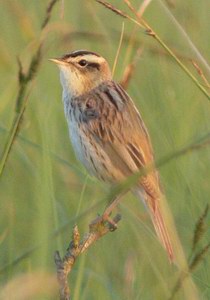 |
Author: Alexander Kozulin
Place: Belarus, Sporava mire, Kakorytsa |
 |
Author: Alexander Kozulin
Place: Belarus, Zvanets mire, Navasiolki |
 |
Author: Alexander Kozulin
Place: Belarus, Zvanets mire, Pavitse |
 |
Author: Andrzej Kosmicki
Place: Poland |
 |
Author: Andrzej KosmickiPlace: Poland |
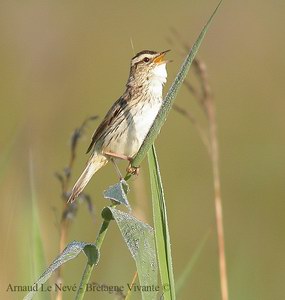 |
Author: Arnaud Le NevePlace: Poland, Biebrza Marshes, Bagno Lawki |
 |
Author: Arnaud Le NevePlace: Poland, Biebrza Marshes, Bagno Lawki |
 |
Author: Arnaud Le NevePlace: Poland, Biebrza Marshes, Bagno Lawki |
 |
Author: Arnaud Le NevePlace: Poland, Biebrza Marshes, Bagno Lawki |
 |
Author: Gerold DoblerPlace: Poland, Biebrza Marshes |
 |
Author: Ilia UkolovPlace: Belarus, Sporava mire, Kakorytsa |
 |
Author: Ilia UkolovPlace: Belarus, Sporava mire, Kakorytsa |
 |
Author: Ilia UkolovPlace: Belarus, Sporava mire, Kakorytsa |
 |
Author: Ilia UkolovPlace: Belarus, Sporava mire, Kakorytsa |
 |
Author: Michal RadziszewskiPlace: Poland, Biebrza Marshes, Mscishy |
 |
Author: Pierre BlockxPlace: Belgium, Oorderen, Nature reserve „De Kuifeend” |
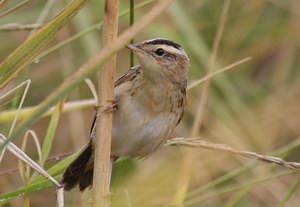 |
Author: Pierre BlockxPlace: Belgium, Oorderen, Nature reserve „De Kuifeend” |
 |
Author: Siargey ZuyonakPlace: Belarus |
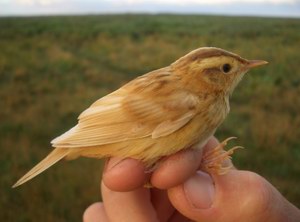 |
Author: Thomas BiteauPlace: France, Bretagne region, Trunvel ringing station |
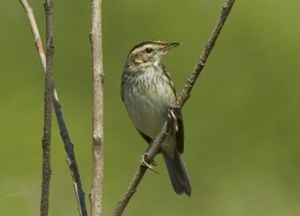 |
Author: Volha LukshytsPlace: Belarus, Zvanets mire |
 |
Author: Volha LukshytsPlace: Belarus, Zvanets mire |
 |
Author: Zymantas MorkvenasPlace: Lithuania |
 |
Author: Zymantas MorkvenasPlace: Lithuania |
 |
Author: Zymantas MorkvenasPlace: Lithuania |
 |
Author: Zymantas MorkvenasPlace: Lithuania |
 |
Author: Zymantas MorkvenasPlace: Lithuania |
 |
Author: Zymantas MorkvenasPlace: Lithuania |

